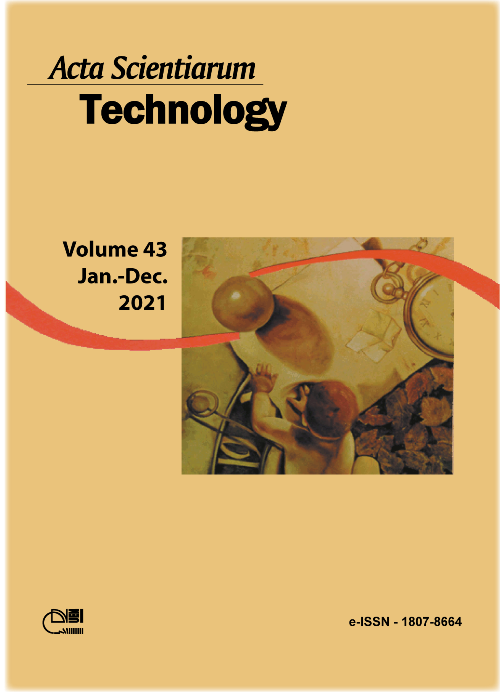Jaboticaba (Plinia jaboticaba (Vell.) Berg) peel flour as an anthocyanin-rich ingredient for the elaboration of sequilho biscuits: Effects on sensory and technological properties
DOI:
https://doi.org/10.4025/actascitechnol.v43i1.55922Palavras-chave:
Sensory analysis; CATA; food ingredients; food texture; sensory propertiesResumo
Jaboticaba (Plinia spp.) peel is an emerging co-product with high levels of flavonoids, anthocyanins, and differentiated sensory characteristics. During the industrial processing of jaboticaba, as in the production of juices, only the pulp is used, and the peel is discarded. This work aimed to produce sequilho biscuits with different concentrations of jaboticaba peel flour (JPF) and evaluate the technological and sensory properties of the products. Biscuits with four concentrations of JPF (B1= 0.75%, B2= 1.5% B3= 2.25% and B4= 3.0%) were prepared. The physicochemical analysis, instrumental texture, color, total flavonoids, and total anthocyanins were evaluated. Sensory perceptions were investigated using the check-all-that-apply (CATA) questionnaire, hedonic scale, and purchase intention scale. Jaboticaba peel flour had high levels of total flavonoids (227.9±14.6 mg 100 g-1) and total anthocyanins (114.2±4.2 mg cyanidin-3-glycoside 100 g-1). Specific volume and bite force were not affected by the addition of JPF. The global impression for all biscuits elaborated with JPF ranged from approximately 6.5 to 7.5. It positively influenced the global impression of the biscuits, with associations with the CATA terms of fruit flavor, jaboticaba flavor, and fruit aroma. However, terms related to the texture, such as fibrous and hard, negatively influenced the global impression. It is recommended to produce sequilho biscuits with JPF addition up to 1.5%. This study demonstrated that the food industry could better exploit the jaboticaba peel, meeting consumer demand for products with differentiated sensory characteristics
Downloads
Downloads
Publicado
Como Citar
Edição
Seção
Licença
DECLARAÇíO DE ORIGINALIDADE E DIREITOS AUTORAIS
Declaro que o presente artigo é original, não tendo sido submetido í publicação em qualquer outro periódico nacional ou internacional, quer seja em parte ou em sua totalidade.
Os direitos autorais pertencem exclusivamente aos autores. Os direitos de licenciamento utilizados pelo periódico é a licença Creative Commons Attribution 4.0 (CC BY 4.0): são permitidos o compartilhamento (cópia e distribuição do material em qualqer meio ou formato) e adaptação (remix, transformação e criação de material a partir do conteúdo assim licenciado para quaisquer fins, inclusive comerciais.
Recomenda-se a leitura desse link para maiores informações sobre o tema: fornecimento de créditos e referências de forma correta, entre outros detalhes cruciais para uso adequado do material licenciado.



















